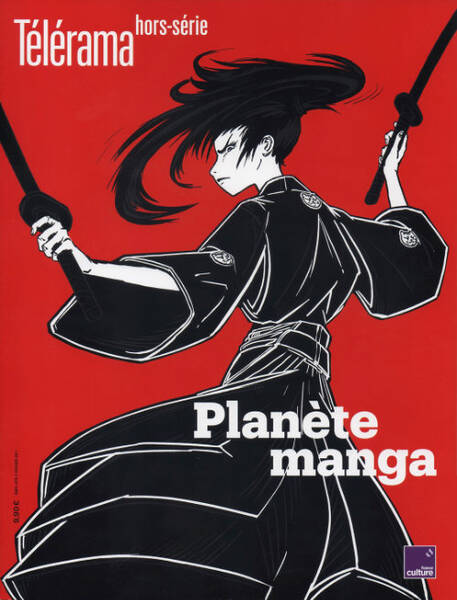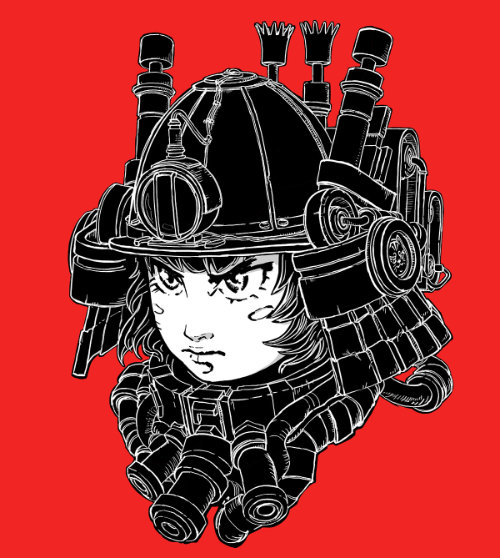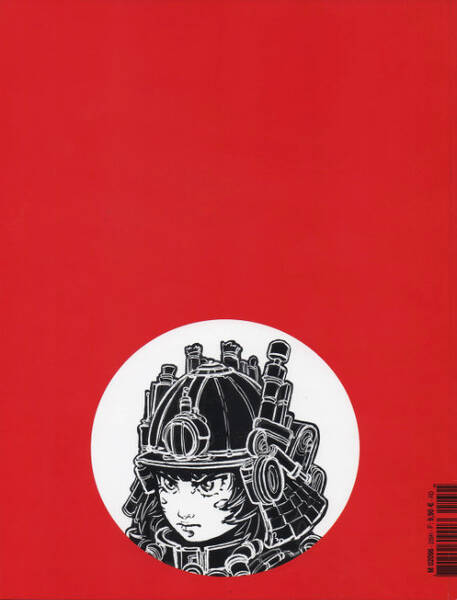About The return of Cupid
Artist statement
February 2025

In the middle of the final confrontation, when all seemed lost, and having given up all hope, it is at
the last moment that the hero receives the providential help of Cupid
I’m delighted to be able to mount this new solo exhibition at the invitation of Megumi Ogita. It’s also an occasion with symbolic value. I’m fortunate enough to have held the first exhibition in this space in 2010, and to close the series by holding the last exhibition in the same space in February-March 2025, before the gallery moves.
I wanted the theme of this solo show to maintain a link with the previous one. This is quite common in my work, given the presence of certain recurring themes. The 2010 exhibition dealt with the theme of the Tower of Babel, through the filters of Japanese pop culture, Italian and French Renaissance culture, particularly decor and grotesque ornaments. Indeed, one of the main pop references used was the animated series “Babel II” (1971, バビル2世) adapted from the manga by Mitsuteru Yokoyama.
On that occasion, I was glad to produce a soft-vinyl edition of the Poseidon robot with Shikaruna Kôbo. I had fun staging Poseidon facing a Kaiju from the 1967 collection “Sekai no Kaiju” (『世界の怪獣』) through a series of wall and panel drawings. One of the underlying themes was the epic battle of heroes against menacing creatures from beyond space, ready to destroy our world. It’s a theme that runs through a whole swathe of Japanese pop culture from the 1960s to the present day. This culture, which I’ve been immersed in since childhood, has had a profound influence on my work. I’m thinking of series like Nagai Go’s UFO Robot Grendizer, Neon Genesis Evangelion or Gurren Lagann. But this theme is also prevalent in Toei’s tokusatsu, such as Space Sheriff Gavan and the Metal Heroes series, the Sentai series, more discreet series like Spectreman, or seminal classics like Ultraman or Kamen Rider.
The Tokusatsu and Sentai theme has been reinforced through my collaboration since 2014 with Rainbow Zokei, for the realization of works such as “Super Polifilo’s armor”, costume fabrications for the artistic direction of the Mozart opera “Il Re Pastore” at the Théâtre du Châtelet in Paris, and several other projects. I would like to thank Mr. Yoshikawa for his continuous support.
This exhibition is therefore of particular importance to me. Mr. Ogita’s invitation gives me the opportunity to express myself fully and freely.
It’s also an opportunity to expand and strengthen my artistic universe even further. It also allows me to weave even more relevant links not only between my works, but also between the different cultures and historical periods that have influenced them.
Loving the Alien


This time, I wanted to approach this relationship with the extraterrestrial, the exotic, the strange, from a different angle. Here, I treat it in the light of the influence of the power of love. In particular, in the series of works linked to The Dream of Poliphilo (1499), I have repeatedly addressed the theme of love, through its personification as the god Cupid. In Poliphilo’s Dream, as in many Renaissance works, the implacable power of this god is repeatedly mentioned. Indeed, no one, not even the most powerful of gods, can resist him. That’s why we find the inscription NEMO (nobody) beside him. Meaning that no one can escape him. Edgar Wind, in Pagan Mysteries in the Renaissance (1958) has presented several of Cupid’s facets. One of them is the ability to forge bonds and keep the world in balance (copula mundi, and knot of Love). This idea reminds me a lot of the Japanese concept of Go-en (ご縁). It’s about forging bonds, in this case love bonds, where you might expect confrontation. It’s an ironic way of evoking the problems the world is experiencing on a global scale, with rising tensions and extremism. The mix of cultures that I experience on a daily basis and deal with in my work is a fundamental basis of my artistic approach. The fuel for this approach is to be found in the links forged, in the interest in diverse cultures and, of course, in the power of love.
Another influence for this exhibition comes from David Bowie’s songs “Loving the Alien” (1985) and “Moonage Daydream” (1971). In addition to the music and the performance of the performers in these two Bowie hits, the relationship to the strange and alien, the bonds of love or confrontation, and the danger of cosmic scale are concepts that made an impression on me. They echo the world of the Tokusatsu.
Cupid’s Menace

Version 1: Double Heart-Ray-Guns, 2025 / 65 cm, 3D print ABS, paint, metal stand / Ed. 8 ex. + 4 EA / Production collaboration: Rainbow Zokei
This is a representation of Cupid, the Roman mythological god of love and parallel to the Greek god Eros. Cupid is frequently depicted in Western art as an angel with a bow. The arrows have the power to make anyone who is touched fall in love. I had fun equipping him with Japanese SF-style armor mixed with Mannerist Renaissance influences. I also swapped his bow for a pair of heart-arrow ray guns.
This work has several levels of reading and numerous references.
As far as the main reading levels are concerned, the ray-gun with hearts invites us to think, with a touch of irony, about the pre-eminence of love over violence. This classic theme retains all its force in the light of current world politics. Then there’s the counterbalancing idea of the implacable force of Love/Eros, notably developed in Poliphilo’s Dream.
Among the main references are two 18th-century works, “L’Amour menaçant” (Threatening Love) by Falconet, and “L’amour Van-Loo” (Van-Loo Love) by Boizot. Both were produced in porcelain by the Manufacture de Sèvres. I had the opportunity to discover and work with them during my projects with Sèvres. These two works each depict a cute, childlike Cupid. These pieces are executed with a refinement in which 18th-century French artists excelled. Falconet’s Cupid has a mischievous look that warns the viewer not to rely on his small stature. Boizot’s Cupid threatens the viewer directly with his bow.
The armor’s references come from the François I gallery in the Château de Fontainebleau. The paintings and decorations are the work of Italian artist Rosso Fiorentino. I refer mainly to the stucco work in this fabulous gallery. This Renaissance and later Mannerist style from Fontainebleau, which I adore, has been given the name “cuirs”. With their dynamic shapes, these designs remind me of elements of hi-tech suits or SF armor. I found an interesting link with the meca-organic style of SF armor found in Japanese manga and anime series such as Neon Genesis Evangelion, Apple Seed and Macross.
The lion motif adorning the helmet and chest of the armor is a theme frequently associated with Cupid in Renaissance iconography. Once again, it’s a sign of the omnipotence of the god of love. He can subdue the lion, king of animals.
This SF-Renaissance Cupid is ready to face interstellar dangers. He can bend the will of fearsome Kaiju, and influence the destinies of many heroes past and future.
Cupid is thus considered the most powerful god by Francesco Colonna, the presumed author of Poliphilo’s Dream, because no one, neither man nor god, can resist his power. This Cupid also establishes a bridge between the Tango series and my series of works on Poliphilo’s Dream, including the Super Polifilo armor in this exhibition. François I was himself a reader of Poliphile. The first French translation of Poliphile was published during his reign.
Cupid therefore plays a central role in this exhibition.
This work, as well as the new realization of Super Polifilo’s armor, is produced with the help of Rainbow Zokei. I’m delighted to continue my collaboration with this company, which has played a historic role in Tokusatsu and Sentai production for decades.
Polifilo’s Armor


The Hero’s Armor / Super Polifilo
Version 1, 2014, Ed. 8ex + 4EA, 96cm, FRP, lights, paint, metal stand / Production collaboration: Rainbow Zokei
The Hero’s Armor – Super Polifilo
Version 1.2 / 2025 / 2025, Ed. 8ex + 4EA, 65cm, 3D printed ABS, paint, metal frame and stand / Production collaboration: Rainbow Zokei
This is a suit of armor I designed for the character of Super Polifilo. In my reinterpretation of Le Songe de Poliphile (It, 1499; trans. Fr 1546), I had fun giving Poliphile a means of protecting himself and reacting to the dangers he faces. In Colonna’s work, Poliphile tends to become frightened, or even to flee, in the face of certain dangers, such as the wolf in the first landscape of ruins, or the dragon appearing at the heart of a monumental gate.
This armor is at the crossroads of several cultures and historical periods that are dear to me. Indeed, the two main references are the parade armor of King Henri II of France, attributed to Delaune (1530-80), and the armor from the tokusatsu series Uchuu Keiji Gyaban (1982). Another reference point for this hero-related work is Nintendo’s The Legend of Zelda video game series.
The childlike proportions refer in part to the age I was when I discovered the Gyaban series, and also to the age my eldest son was when I designed this armor.
In Poliphile’s Dream, Poliphile sets off on a dream quest to find his beloved Polia. During this dream adventure, Poliphile discovers fantastic constructions and characters linked to Roman antiquity. Cupid, presented as the most powerful god, plays the role of Poliphile’s protector. So I continued my reflection by imagining Cupid offering Poliphile his armor. That’s why Poliphile’s armor is marked with a heart on his chest.
Poseidon (Neptunus)
Blue, White, Red,, 2010-2025, Soft-Vinyl, paint
production collaboration: Shikaruna Kobo
This work is a direct link to the exhibition The Tower in this same space, as it is the only series to have been shown in the 2010 exhibition. From the “Babel II” series (1971, バビル2世) adapted from the manga by Mitsuteru Yokoyama, this work depicts the robot Poseidon. At the time of the first exhibition, I had fun bringing Poseidon into my artistic universe, even if it meant renaming him Neptunus for the occasion.
In this 2025 version, I’m treating the same figures with three original drawings referring to the Babel II series and, of course, to ancient, Renaissance and Baroque iconography relating to the ocean god Poseidon/Neptune.
Wall Drawings
The return of Cupid
2025, 8.5 x 3.5 m, paint, chalk,
Toku-tango 1
2025, 7.5 x 3.5 m, paint, chalk
Super Polifilo, The hero’s Armor
2025, 7 x 3.5 m, paint, chalk
Neptunus (Poseidon) after Babel
2025 / 3,2 x 2,7 m, paint, chalk
Fortuna
2025 / 4 x 2,7 m, paint, chalk
Cupidon
2025, 4×2.7m, paint, chalk
In the same way as in 2010 and on many other occasions, I’m happy to create a series of drawings on all the gallery walls. This creates a powerful, coherent environment in which visitors can immerse themselves. It also consolidates the links between the different works.
A first wall drawing greets visitors as they enter the space. It materializes and sublimates Cupid’s power. Next to it are drawings on the theme of the Toku-Tango series. A Super Sentai “Q Rangers” robot is dancing tango with a Kaiju, instead of fighting together, while not destroying the city around them, under the watch of Cupid. Then, facing Cupid, we find Super Polifilo’s armor surrounded by drawings related to Poliphile’s adventure. The space at the back is dedicated to Poseidon, along a portrait of Cupid, and an allegorical figure of “Fortuna” that can be linked to Poliphile’s adventure.
Some wall drawings are made partly on wood panels. Several other works are inserted into the wall drawings.



A message of Love the World needs nowadays
Finally, I would like to emphasize the importance of some of the symbolic messages presented by the works shown in this exhibition, and particularly by Cupid / Menacing Love.
I liked to “play seriously” with seemingly opposite concepts, this time using the vocabulary of super armor and SF grade weapons, but with hearts and held by a little angel like figure. It gives the viewer a bitter-sweetly ironic feeling to some extent.
One could consider that praising the power of Love, and by extension, love of the Alien, would be perceived as too sugary or too innocent. But in times of great uncertainty such as the world in which we live in, I hope this idea of a Cupid protector of the lovers, and terrible with the ones who forgot to love, feels like an encouraging message to anyone facing brutally stupid situations. This is a message of Love the world needs nowadays.

* * *
*



